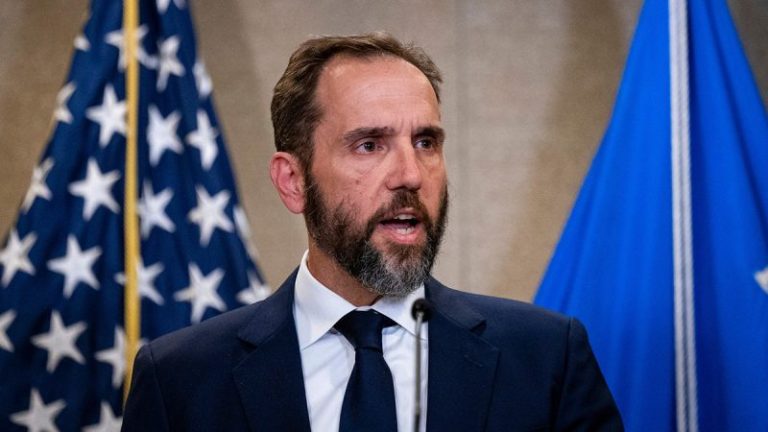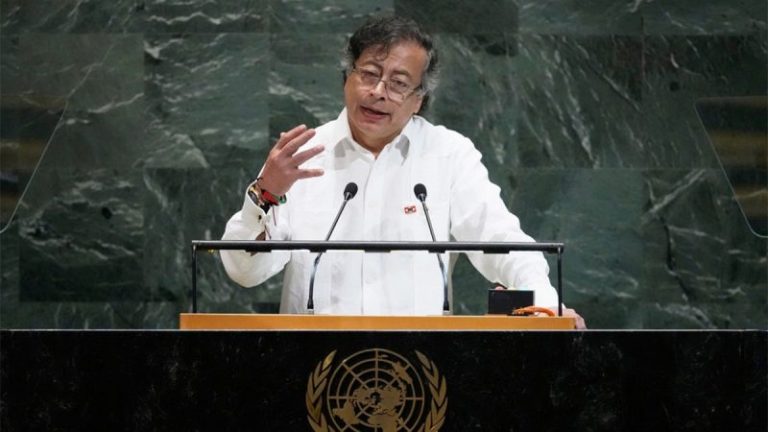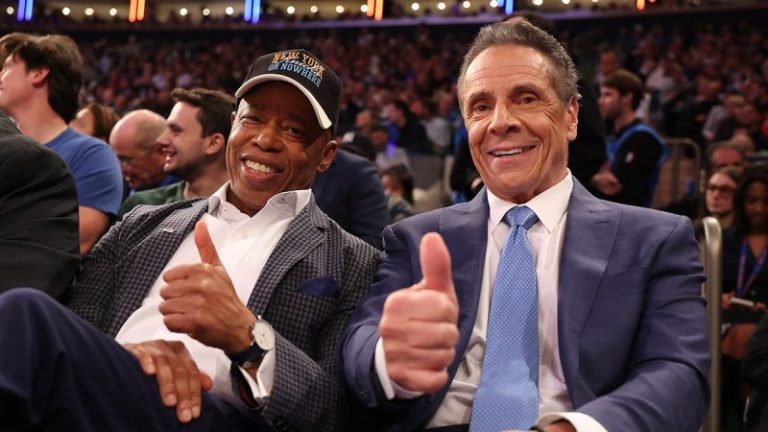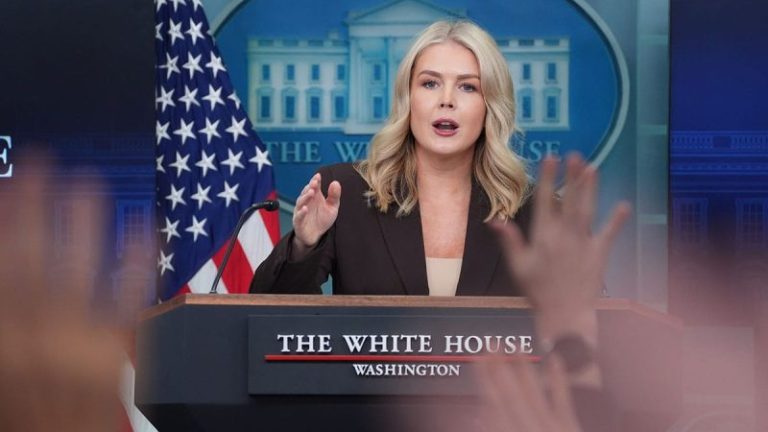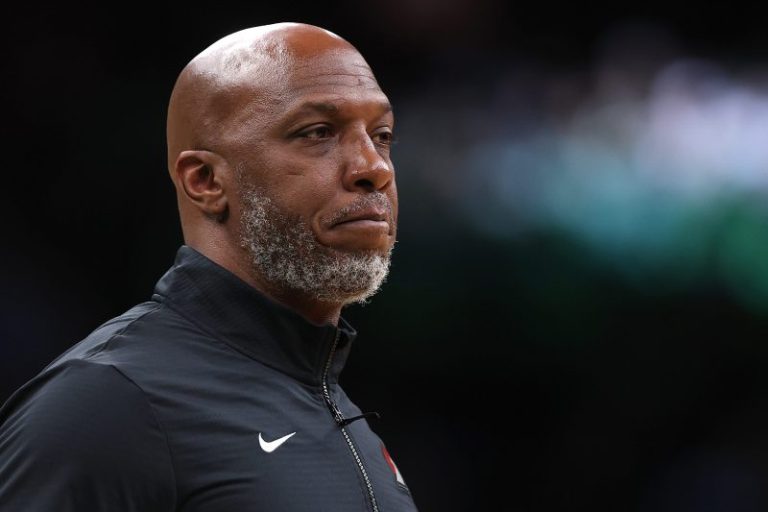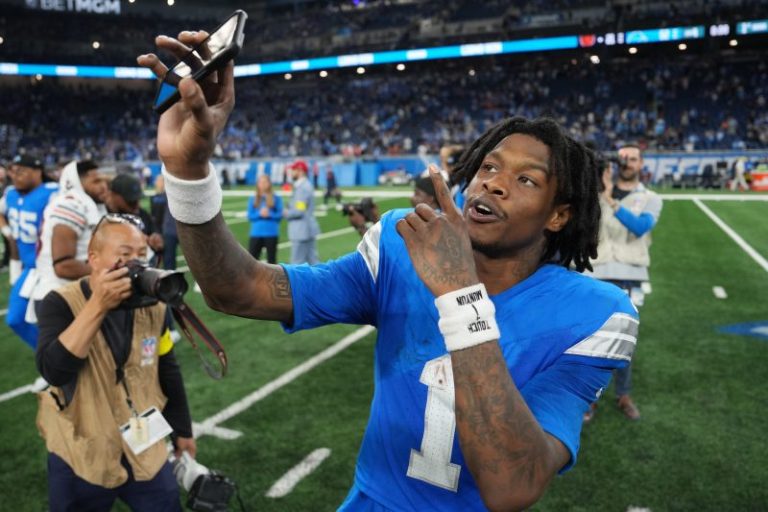Another women’s college basketball season is here with the team that finished last year at No. 1 also starting at top the USA TODAY Sports women’s college basketball poll.
Here is our annual preview outlooks for the Top 25 teams in the preseason poll.
1. Connecticut (37-3)
Points: 772 (28 first-place votes). Previous ranking: 1.
The Huskies are back on top of the mountain after winning their first national title since 2016. Although Paige Buckers moved on to the WNBA, don’t expect a dropoff from the Huskies. Senior guard Azzi Fudd (13.6 ppg) opted to return at head coach Geno Auriemma’s suggestion, to unlock her full potential. The Huskies also return phenom Sarah Strong (16.4 ppg, 8.9 ppg), the WBCA freshman of the year, in addition to KK Arnold, Jana El-Alfy and Ice Brady from their championship squad. As if the program didn’t already have an embarrassment of riches, the Huskies added transfers Serah Williams (Wisconsin) and Kayleigh Heckel (Southern California).
2. South Carolina (35-4)
Points: 741 (3 first-place votes). Previous ranking: 2.
The Gamecocks lost the core that made a run to the national title game last season to graduation (Te-Hina Paopao, Sania Feagin, Bree Hall), the transfer portal (MiLaysia Fulwiley) and injury (Chloe Kitts). Coach Dawn Staley, however, picked up senior guard Ta’Niya Latson, who led the nation in scoring and set career-highs in points, rebounds, assists and steals last season at Florida State. Sophomore forward Joyce Edwards will likely move to a starting spot after leading the team in scoring (12.7 ppg) off the bench last season.
3. Texas (35-4)
Points: 688. Previous ranking: 4.
Texas’ first season in the SEC ended with a program-high 35 wins and first Final Four appearance since 2003, thanks in no small part to the one-two punch of Madison Booker and Rori Harmon. Booker was named the SEC Player of the Year after averaging a team-high 16.9 points in her breakout sophomore campaign. Harmon led the Longhorns in assists (5.9 per game) and steals (2.2) in her first season back from an ACL injury. Look for sophomore guards Jordan Lee and Bryanna Preston to take on a larger role and assist Texas’ dynamic duo.
4. UCLA (34-3)
Points: 686. Previous ranking: 3.
The UCLA women’s basketball team hit a number of milestones last season. The Bruins reached the 30-win mark and made it to the Final Four for the first time in program history. UCLA has all the pieces to carry that momentum into the upcoming season with the return of most of their starting lineup, including the top three scorers in Lauren Betts (20.2 ppg, 9.5 rpg), Kiki Rice (12.8 ppg) and Gabriela Jaquez (9.6 ppg). The Bruins added Gianna Kneepkens (Utah) in the transfer portal and freshman five-star recruit Sienna Betts, the younger sister of Lauren Betts.
5. LSU (31-6)
Points: 628. Previous ranking: 8.
Flau’jae Johnson (18.6 ppg) has reached at least the Elite Eight in each of her three seasons under Kim Mulkey, including winning the national championship in 2023. Johnson teams up with Mikaylah Williams (17.3 ppg) and MiLaysia Fulwiley, who transferred from South Carolina, in hopes of contending for a championship again. LSU’s frontcourt took a hit with the loss of forward Aneesah Morrow, who was drafted into the WNBA after leading the nation in rebounds and double-doubles. Transfers Kate Koval (Notre Dame) and Amiya Joyner (East Carolina) will try to fill that void, in addition to five-star freshman recruits Grace Knox, ZaKiyah Johnson and Divine Bourrage.
6. Duke (29-8)
Points: 594. Previous ranking: 7.
The Blue Devils outperformed expectations last season, winning the ACC tournament title and then reaching the Elite Eight for the first time since 2013. Duke may have lost ACC tournament MVP Oluchi Okananwa to the transfer portal, but the Blue Devils are returning four starters, including ACC rookie of the year Toby Fournier (13.2 ppg) and senior guard Ashlon Jackson (12.4 ppg). Both Fournier and Jackson were named to the preseason All-ACC team.
7. Oklahoma (27-8)
Points: 559. Previous ranking: 11.
The Sooners first season in the SEC ended with the team’s first Sweet 16 run since 2013. Coach Jennie Baranczyk returns that team’s core, including Payton Verhulst, Sahara Williams and senior center Raegan Beers, who led Oklahoma in points (17.3), rebounds (9.4) and blocks (1.2) per game, while shooting 63.3% from the field. The Sooners bypassed the transfer portal, but anticipate a major boost from their freshman class, led by No. 1 overall recruit Aaliyah Chavez.
8. North Carolina State (28-7)
Points: 516. Previous ranking: 10.
The Wolfpack advanced to the Final Four in 2024 as part of four Sweet 16 appearances in the last five season. Aziaha James and Saniya Rivers depart after forming one of the best backcourts in the country. NC State will now look to junior guard Zoe Brooks (14.2 ppg) to take the lead, in addition to Vanderbilt junior transfer Khamil Pierre, who led the SEC in made field goals (273) last season. Qadence Samuels (UConn) is another transfer that will add instant value to the Wolfpack. Don’t overlook sophomores Zamareya Jones and Tilda Trygger, who will likely step into bigger roles.
9. Tennessee (24-10)
Points: 509. Previous ranking: 16.
The Lady Vols are looking to build upon last year’s Sweet Sixteen finish in coach Kim Caldwell’s first season, where they finished a mere 8-8 in SEC play. Tennessee brought in one of the best recruiting class in the country, including five-star recruits Deniya Prawl and Mia Pauldo, in addition to her twin sister Mya Pauldo. Talaysia Cooper (16.1 ppg) will return after leading Tennessee’s high scoring offense last season, which ranked third in the nation (86.6 ppg).
10. Maryland (25-8)
Points: 487. Previous ranking: 14.
The Terps made a splash in the transfer portal and landed guards Yarden Garzon (Indiana) and Oluchi Okananwa (Duke), who will be called upon to replace the production of guard Shyanne Sellers following her graduation. Both Garzon and Okananwa are more than capable. Garzon led the Big Ten in 3-pointers (88) and has shot over 40% from beyond the arc in all three seasons at Indiana, which will help Maryland up its 36.1% average last season. Garzon and Okananwa will team up with Kaylene Smikle, who led the Terps in scoring (17.9 ppg) and steals (1.5 spg) last season.
11. North Carolina (29-8)
Points: 431. Previous ranking: 12.
Last season’s finish was the best in the Courtney Banghart era, and while the stars are gone, the pieces are there to build on it. It will be hard to move on from linchpin Alyssa Ustby, but Louisville transfer Nyla Harris should fit into that role nicely. Plus, Banghart brought in an impressive recruiting class with five-stars Nyla Brooks and Taliyah Henderson. There’s a good chance for the Tar Heels to compete for the ACC crown.
12. TCU (34-4)
Points: 390. Previous ranking: 6.
The significant move in the transfer portal happened with the arrival of guard Olivia Miles from Notre Dame. Miles is expected to make an immediate impact as the Horned Frogs try to build off its first Elite Eight appearance in school history. She’s not the only new face at TCU from the portal with Veronica Sheffey (San Diego State), Clara Silva (Kentucky) and Kennedy Basham (Arizona State) bringing much-needed depth to a squad that has its eyes set on another dominant Big 12 run.
13. Notre Dame (28-6)
Points: 351. Previous ranking: 9.
Speaking of Miles, her old program in Notre Dame will try to retool after also losing Sonia Citron and Maddy Westbeld. It helps to have player of the year candidate Hannah Hidalgo (23.8 ppg) leading the way. The Fighting Irish are hoping some new additions can help carry the burden off Hidalgo, including five-star freshman Leah Macy, who will be a key figure in the post.
14. Mississippi (22-11)
Points: 346. Previous ranking: 20.
You’d think losing 12 players would result in a down year, but not at Mississippi, where the Rebels are starting to assert themselves as an SEC contender following their second Sweet 16 appearance in three seasons. Yolett McPhee-McCuin replenished the roster with several solid transfers, most notably Cotie McMahon, who was a force at Ohio State. This will be a team to watch once again as one that could surprise.
15. Michigan (23-11)
Points: 322. Previous ranking: Not ranked.
The Wolverines have been trying to take that next step from good to great, and this year could finally be the time. Olivia Olsen (16.3 ppg) and Syla Swords (16.0 ppg) showed the future is bright in their freshman seasons as they solidify themselves as stars. Another group of potential impact players will be arriving to Michigan in UCLA transfer Kendall Dudley, as well as freshman McKenzie Mathurin, Ciara Byars and Jessica Fields. While young, this season could set the stage for a run of success for Michigan.
16. Southern California (31-4)
Points: 291. Previous ranking: 5.
The outlook for the Trojans changed considerably when national player of the year candidate JuJu Watkins was lost to injury for the season. But the cupboard is far from bare as coach Lindsay Gottlieb brought in a strong recruiting class led by Jasmine Davidson to join veterans like Kennedy Smith (9.5 ppg) expected to take on bigger roles.
17. Iowa State (23-12)
Points: 285. Previous ranking: Not ranked.
After a somewhat disappointing season that ended in the second round of the tournament, the Cyclones are aiming higher. Five of Iowa State’s top six scorers return, led by standout center Audi Crooks (23.4 ppg, 7.5 rpg) and versatile forward Addy Brown (15.2 ppg, 7.7 rpg). Arizona transfer Jada Williams should start immediately at the point.
18. Baylor (28-8)
Points: 282. Previous ranking: 18.
The Bears will rely on an experienced frontcourt and several new perimeter scorers in hopes of getting back to the top of the Big 12. The veteran forwards are double-double machine Darianna Littlepage-Buggs (13.8 ppg, 10.0 rpg) and Bella Fontleroy, with Taliah Scott (Arkansas) and Yuting Deng (Auburn) headlining the new arrivals.
19. Louisville (23-11)
Points: 198. Previous ranking: Not ranked.
Entering the season with 486 career wins, Cardinals coach Jeff Walz clearly knows what he’s doing. He has to replace a lot of lost production from last year’s squad, but sophomore guard Tajianna Roberts (12.8 ppg) is a good starting point, and a number of her classmates will take on larger roles. Skylar Jones transfers in from Arizona to provide another experienced hand in the lineup.
20. Kentucky (23-8)
Points: 164. Previous ranking: 13.
With star guard Georgia Amoore off to the WNBA, this year’s Wildcats will be built around their talented frontcourt trio of Clara Strack (15.4 ppg, 9.7 rpg), Teonni Key (11.4 ppg) and Amelia Hassett (8.6 ppg, 7.9 rpg). Coach Kenny Brooks will count on transfer guards Tonie Morgan (Georgia Tech) and Asia Boone (Liberty) to adjust quickly to life in the hotly-contested SEC.
21. Vanderbilt (22-11)
Points: 148. Previous ranking: Not ranked.
The Commodores lost some key pieces to the transfer portal after reaching their second consecutive tournament under Shea Ralph. The did retain Mikayla Blakes, who led the team in scoring at 23.3 points per game as freshman and will get assisted in the backcourt by Madison Greene. Added to the mix are Ndjakalenga Mwenentanda (Texas) from the transfer portal and the return of Sacha Washington, who missed all of last season with an injury, but averaged 12.1 points per game for Vanderbilt in 2023-24.
22. Oklahoma State (25-7)
Points: 113. Previous ranking: 22.
The Cowgirls look to have the elements of making a deeper tournament run after first-round exits in two appearances under Jacie Hoyt. Stailee Heard (16.8 ppg, 8.2 rpg) and Micah Gray (13.7 ppg) form a productive backcourt. Scoring punch is also arriving with transfers Haleigh Timmer (South Dakota State) and Amari Whitting (Brigham Young).
23. Iowa (23-11)
Points: 91. Previous ranking: Not ranked.
The first season post-Cailtin Clark and with first-year coach Jan Jensen was a transition, but the Hawkeyes look to be in good shape push for a strong finish in the Big Ten. The optimism starts with returning seniors Hannah Stuelke (12.7 ppg, 7.7 rpg) and Kylie Feuerbach and the additions of transfers Chazadi Wright (Georgia Tech) and Emely Rodriguez (Central Florida). A player to watch is incoming five-star freshman Addie Deal, who is expected to make an immediate impact.
24. Ohio State (26-7)
Points: 82. Previous ranking: 17.
The Buckeyes will feature a strong backcourt with the returns of Jaloni Cambridge (15.4 ppg) and Chance Gray (12.0 ppg). More firepower on the perimeter comes with transfer arrival of T’yana Todd (Boston College). On the interior, Elsa Lemmilä is expected to be bigger presence in her sophomore season.
25. Kansas State (28-8)
Points: 76. Previous ranking: 15.
The Wildcats look to build on the success of the past two seasons with a rebuilt lineup. Only three players return from last year’s Sweet 16 team, notably Taryn Sides (9.6 ppg). Kennedy Taylor could be another holdover as she is appealing for another season of eligibility from the NCAA. Significant additions to the team include transfers Jenessa Cotton (Duke) and Tess Heal (Stanford) and incoming freshman Jordan Speiser.
Dropped out: No. 19 West Virginia (25-8);No. 21 Alabama (24-9); No. 23 South Dakota State (30-4); No. 24 Florida State (24-9); No. 25 Creighton (26-7).Others receiving votes: West Virginia (25-8) 72; Richmond (28-7) 67; Michigan State (22-10) 64; Alabama (24-9) 40; South Dakota State (30-4) 19; Florida State (24-9) 15; Creighton (26-7) 9; Princeton (21-8) 9; Washington (19-14) 8; Indiana (20-13) 7; James Madison (30-6) 4; Stanford (16-15) 4; Nebraska (21-12) 2; California (25-9) 1; Fairfield (28-5) 1; George Mason (27-6) 1; Minnesota (25-11) 1; South Florida (23-11) 1.
This post appeared first on USA TODAY

